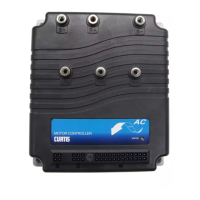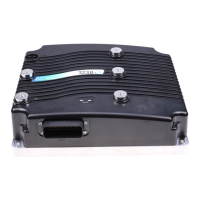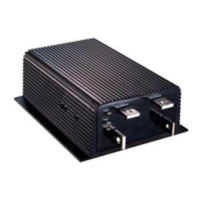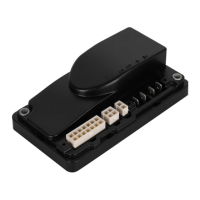Curtis 1243GEN2 Manual
73
7 — DIAGNOSTICS & TROUBLESHOOTING
Table 7 TROUBLESHOOTING CHART,
cont’d
LED PROGRAMMER FAULT
CODE LCD DISPLAY
CATEGORY
POSSIBLE CAUSE FAULT CLEARANCE
4,1 LOW BATTERY VOLTAGE 2 1. Battery voltage < undervoltage cutback. When voltage rises above
2. Corroded battery terminal. undervoltage cutoff point.
3. Loose battery or controller terminal.
4,2 OVERVOLTAGE 2 1. Battery voltage >overvoltage shutdown. When voltage falls below
limit. overvoltage cutoff point.
2. Vehicle operating with charger attached.
4,3 THERMAL CUTBACK 2 1. Temperature >85°C or < -25°C. Clears when heatsink
2. Excessive load on vehicle. temperature returns to
3. Improper mounting of controller. within acceptable range.
4,4 ANTI-TIEDOWN 3 1. Mode switches shorted to B+. Release Mode Select 1.
2. Mode Select 1 “tied down” to select
Mode 2 or Mode 4 permanently.
MOTOR HOT 3 1. Field resistance > motor hot setpoint. When resistance < setpoint.
MOTOR WARM 3 1. Field resistance > motor warm setpoint. When resistance < setpoint.
Fig. 21 Curtis 840
Spyglass, 3-LED
and 6-LED models.
Fault LED (red)
BDI LED (yellow)
Hourmeter LED (green)
8-character LCD display
Fault LED (red)
BDI 0–100% LEDs
yellow
8-character LCD display
0 1
green
red
3-LED Spyglass
The hourmeter LED lights when the LCD
is displaying hourmeter data.
The BDI LED lights when the LCD is
displaying BDI%. It flashes when BDI%
drops to <10%.
The Fault LED flashes to indicate an
active fault, and the fault code appears on
the LCD.
The word SERVICE is displayed at key-on
if either service timer has expired.
6-LED Spyglass
The three green BDI LEDs function as a
bargraph showing BDI% between 52% and
100%.
Yellow LED = 36% – 51% BDI.
Red LED steady = 20% – 35% BDI.
Red LED flashing = 0 – 19% BDI.
The Fault LED flashes to indicate an
active fault, and the fault code appears on
the LCD.
The word SERVICE is displayed at key-on
if either service timer has expired.
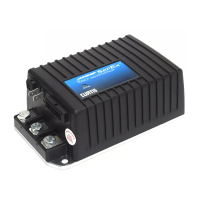
